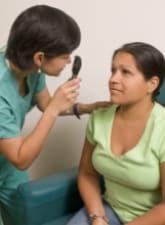Washington Diabetes Profile
Diagnosed diabetes is prevalent across all 50 states and Washington, DC. People with diabetes are at high risk of heart disease, stroke, and other serious complications, such as kidney failure, blindness, and amputation of a toe, foot, or leg. CDC’s Division of Diabetes Translation (DDT) focuses on preventing type 2 diabetes, reducing diabetes complications and disability, and reducing diabetes-related disparities, which are differences in health across geographic, racial, ethnic, and socioeconomic groups.
View another state
Key Metrics in Washington
$1M
Fiscal Year 2022 Funding
Nationally: $88.5M
521.9K
Total Diabetes Cases (Prevalence)
Nationally: 28.5M
46K
New Diabetes Cases (Incidence)
Nationally: 1.4M
8.6%
Notified of Prediabetes
Nationally: 8.8%
7.6M
State Population
Nationally: 328.2M
$5B
per year in direct medical costs attributed to diabetes
Nationally: $237B
$1.7B
per year in indirect costs attributed to diabetes
Nationally: $90B
Does Washington Have a Diabetes Action Plan?
Yes
(28 States Nationally)
Washington Program Activities
National Diabetes Prevention Program (National DPP)
25
CDC-recognized organizations offering the lifestyle change program
(2.1K Nationally)
6
Medicare Diabetes Prevention Program suppliers
(288 Nationally)
23.6K
Participants enrolled in the National DPP lifestyle change program
(583K Nationally)
Washington, DC Medicaid program has some level of Medicaid coverage for the National DPP lifestyle change program
Diabetes Self-Management Education and Support (DSMES)
45
Recognized/accredited DSMES service providers
(2.1K Nationally)
36.8K
People with diabetes with at least one encounter at a recognized/accredited DSMES service
(929K Nationally)
Washington Highlights
- From June 2020 to June 2021, 133 newly recognized or accredited DSMES sites were established in Washington.
- The Washington Department of Health disseminated the National DPP lifestyle change program toolkits and engaged partners to support enrollment in the program.
Related Resources

